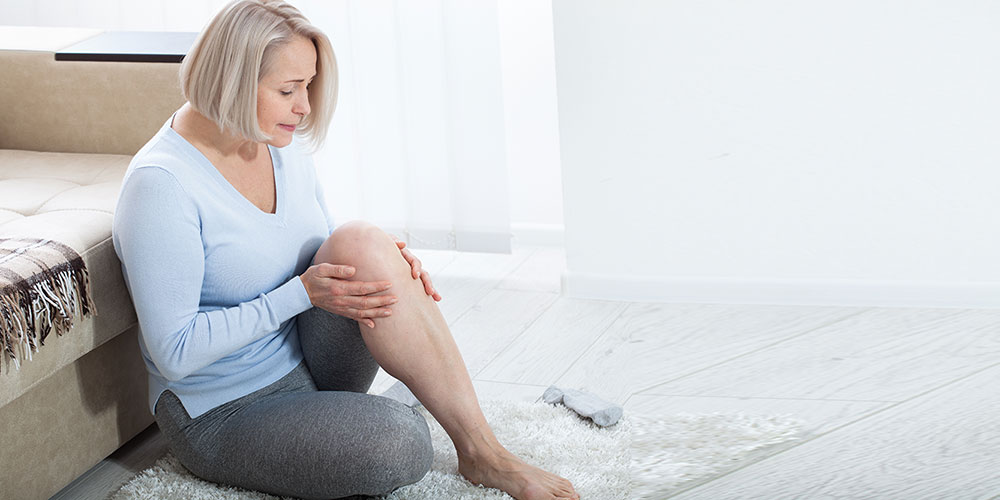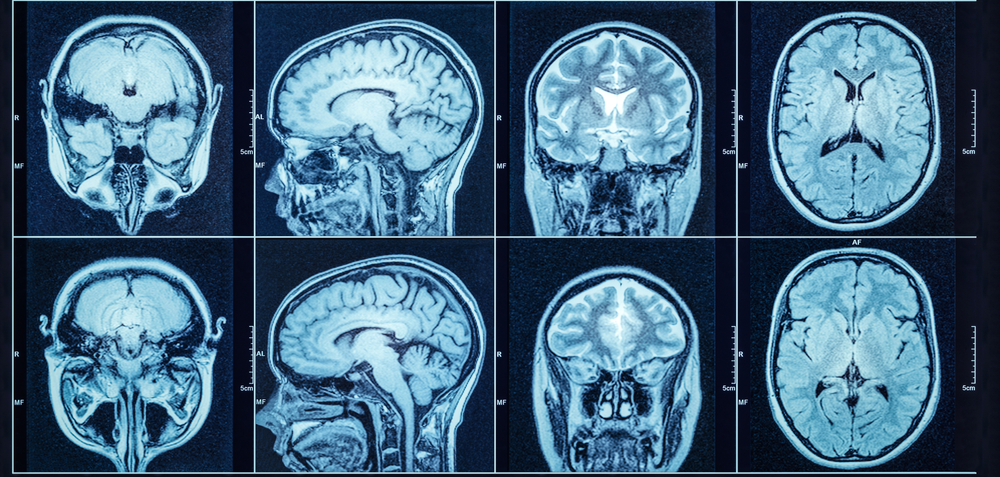Make an Appointment
As we age, our bodies don’t work as well as they used to. We’re finding it hard to accept that our backs are achy and our knees are sore. What’s going on here and how can it stop?
Unfortunately, aging is unstoppable and it happens to us all. But there are things we can do to make things better and to ease our discomfort when our bodies start to deteriorate.
Knee osteoarthritis is a common form of osteoarthritis and can affect our lives in a big way. Here, we’ll explain what knee osteoarthritis is, what it’s caused by, how it presents itself, and how to manage osteoarthritis in the knee.
To explain knee osteoarthritis, we’ll need to separate what the knee is and what osteoarthritis is.

The knee is the largest and strongest joint in your body. It is composed of the lower end of the femur (thighbone), the upper end of the tibia (shinbone), and the patella (kneecap). Where the ends of the three bones touch are covered with articular cartilage which is a smooth, slippery substance that protects and cushions the bones as you bend and straighten your knee.
The meniscus, two wedge-shaped pieces of cartilage, act as "shock absorbers" between your femur and tibia. They are tough and rubbery to help cushion the joint and keep it stable.
Surrounding the knee joint is a thin lining called the synovial membrane. This membrane releases a fluid that lubricates the cartilage and reduces friction making movement more comfortable.
Osteoarthritis is the most common form of arthritis in the knee. it is a degenerative “wear-and-tear” type of arthritis. It occurs most often in people over 50 years old but may occur in younger people too.
With knee osteoarthritis, over time, the cartilage in the knee joint wears away. As the cartilage deteriorates, it becomes frayed and rough, and the protective space between the bones lessens. This can result in bone rubbing on bone and can produce painful bone spurs.
Osteoarthritis develops slowly and the pain it causes worsens over time.
1 in 5 Australians aged over 45 have osteoarthritis
What Causes Knee Osteoarthritis?
There are a variety of causes of osteoarthritis of the knee including:
- Age: The ability of cartilage to heal decreases as a person gets older.
- Weight: Excess weight increases pressure on the joints, in particular, the knees.
- Genetics
- Gender: Women aged 55+ are more likely than men to get knee osteoarthritis
- Repetitive stress injuries: May depend on your occupation
- Athletics: Serious knee injuries in sports
- Other illnesses such as metabolic disorders.
According to Osteoarthritis snapshot from the Australian Institute of Health and Welfare report in July 2018, they reported 36 rise in the rate of total knee replacements for osteoarthritis from 2005-06 to 2015-16

Reference : Source: AIHW analysis of ABS Microdata: National Health Survey (NHS) 2014–15. ABS cat. no. 4324.0.55.001. Canberra: ABS. (Data table).
What Are the Symptoms of Knee Osteoarthritis?
Symptoms of knee osteoarthritis may vary from person to person based on severity. Common osteoarthritis knee symptoms include:
- Knee joint becomes stiff, swollen, and tender, making it difficult to bend and straighten the knee
- Pain and swelling may be worse in the morning, or after sitting or resting
- Vigorous activity may cause osteoarthritis symptoms, knee pain, and other discomforts
- The knee may “lock”, “catch”, or “buckle” during movement
- The knee joint may creak, click, snap or make grinding noise (crepitus)
- Pain may gradually increase
- Poor range of motion
Osteoarthritis Knee Treatment & Management
Osteoarthritis knee treatment can come in two different forms, either through medication or physiotherapy, or both.
For pain relief and inflammatory control, treatments include:
- Anti-inflammatory medications
- Hot and cold treatments
- Knee injections for knee pain (corticosteroid injections)
To reduce the force on your knees that could cause flare-ups to your knee osteoarthritis, treatments include:
- Osteoarthritis knee exercises to strengthen and stabilise the hips, knees, and ankles
- Physiotherapy exercises to stabilise the lumbar-pelvic region
- Modifications to sports and daily activities, such as walking up and down stairs or hills
- Lifestyle and home remedies such as maintaining a healthy weight, keeping active, and taking healthy supplements
- Weight loss can help significantly decrease pain, prevent further joint damage and increase mobility with the knee
- A knee brace for osteoarthritis relief while moving around
The American College of Rheumatology guidelines strongly recommend people with OA to participate in cardiovascular (aerobic) and/or resistance land-based and aquatic exercises.
Osteoarthritis knee exercises you can do at home
- Quadriceps Strengthening Exercises: Strong quadriceps muscles help support the knee joint and reduce stress on the knee. One effective exercise is the straight leg raise: while lying on your back, tighten your thigh muscles and lift one leg several inches off the floor, keeping your knee straight. Hold for a few seconds and then lower your leg. Repeat this 10-15 times on each leg.
- Hamstring Stretching: Tight hamstrings can contribute to knee pain. To stretch your hamstrings, sit on the edge of a chair with one leg extended straight in front of you and the heel on the floor. Gently lean forward at the hips until you feel a stretch at the back of your thigh. Hold for 15-30 seconds and then switch legs. Repeat 2-3 times on each side.
- Calf Raises: Calf raises strengthen the calf muscles, which can help stabilise the knee joint. Stand with your feet hip-width apart, holding onto a chair or countertop for balance. Slowly rise up onto your toes, lifting your heels off the floor as high as comfortable. Hold for a few seconds and then lower your heels back down. Repeat 10-15 times.
- Seated Knee Extensions: Sit in a chair with your feet flat on the floor. Slowly straighten one knee, lifting your foot off the floor while keeping your thigh muscles tight. Hold for a few seconds and then lower your foot back down. Repeat 10-15 times on each leg. This exercise helps strengthen the quadriceps muscles without putting excessive stress on the knee joint.
- Tai Chi or Yoga: Both Tai Chi and certain yoga poses can improve balance, flexibility, and strength, which are beneficial for managing knee osteoarthritis. These practices also promote relaxation and stress reduction, which can further help alleviate symptoms.
As always, Physio Inq is here to help. We use our knees for so many things and knee osteoarthritis can put a lot of extra stress on our lives, not just on our joints. It’s important to work with a certified physiotherapist to help you through these issues and make sure you’re not suffering from knee pain more than you have too OR give yourself every opportunity to avoid going under the knife with surgery.
Give us a call today to book an appointment or we’ll come to you with our mobile and clinic services across Australia. We’re committed to helping you lead a more comfortable and active life, so reach out – we’re happy to help!
Take advantage of some of our Mobile Physiotherapy Services across Australia today. If you can’t get to a clinic, why not get a Physiotherapist to you? Check out our locations of where our mobile physio’s are treating.
Date Published: Wednesday, August 14, 2019
Date Modified: Tuesday, July 2, 2024
Locate a Occupational Therapy
Service Near me
Get the experience & convinence you deserve to support your or a loved one's allied health needs.
Our Occupational Therapy team are currently serving & taking appointments in the following states and regions in Australia:
New South Wales
- Blacktown
- Blue Mountains
- Campbelltown And Macarthur
- Canterbury-Bankstown
- Central Coast
- Central West
- Eastern Suburbs Sydney
- Far West
- Georges River
- Hawkesbury
- Inner East Sydney
- Inner West Sydney
- Lower North Shore
- Murray
- Newcastle
- New England
- North Coast
- Northern Beaches
- North Sydney
- Orana
- Parramatta
- Penrith
- Riverina
- South Coast
- Southern Highlands
- South West Sydney
- Sutherland Shire
- Sydney CBD
- The Hills Shire
- The Hunter
- Upper North Shore
- Waverley
- Wollongong
Australian Capital Territory
Northern Territory
Western Australia
Victoria
South Australia
Need to get into direct contact with ur Client Services team? We're all ears. Call our team directly on 1300 731 733
Explore Articles
By Popular Topics
Explore Articles
By Allied Health Services
Explore Articles
By Body Parts

Explore Articles by Allied Health Services











